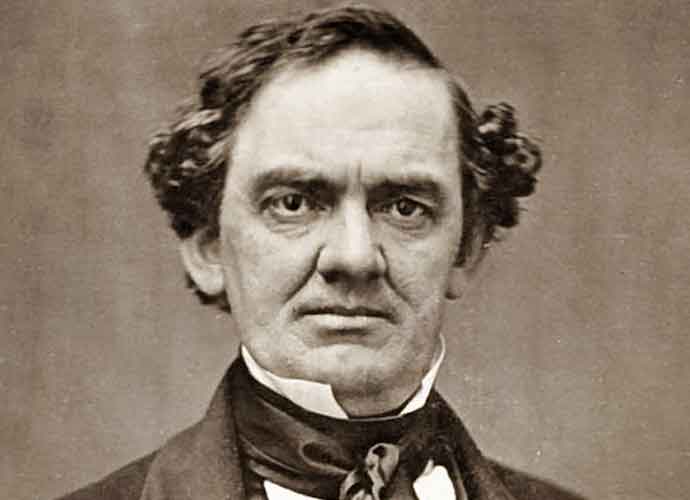‘Barnum: An American Life’ Book Review: New Bio Hints At Multifaceted Life Of American Icon

3/5
Phineas Taylor Barnum provides a perfect example of how the American dream can be achieved. Having grown up in a small town in Connecticut during the early 1800s, Barnum quickly showed a passion for money-making and “Yankee ‘cuteness,” also known as shrewdness, especially in the area of bargaining. Barnum was not content to simply be the son of a farmer, he wanted more than the provincial life could offer. Before he reached the age of 10 the young entrepreneur began to run local lotteries, devising a system that allowed him to make vast amounts of money as eager gamblers tripped over themselves to take part in his lottery, which Barnum had cleverly advertised. Over the course of his long life, Barnum repeatedly went from rags to riches to rags and then to riches once more, always bouncing back from the edge of desperation with some sort of new attraction that he could use to drive audiences wild. His resilience in the face of disaster, such as the five major buildings of his that burned down during his lifetime, and the charisma that he exudes in every interaction makes Barnum truly a man whose story is worth telling.
It’s a shame then, that Robert Wilson is unable to truly do the life of this American icon justice. The book starts off strong, with the introduction and first few chapters making the reader excited to learn more about such a clearly talented and inventive man. That feeling quickly wears off, however, as the reader is repeatedly bombarded with the same type of content for chapter after chapter. Wilson spends much of the book simply listing off Barnum’s various financial enterprises. While it is interesting at first to see how varied his many schemes were, the novelty of his advertising ability and creative genius wear off as Wilson tediously lists out the details of each and every one of Barnum’s many, many museums, circuses, shows, and attractions. Additionally, Wilson does not give context to Barnum’s exploits, forcing the reader to measure each humbug up to other, similar, humbugs by Barnum, making mundane events that at their time, compared to contemporary entertainment, must have been remarkable. By choosing to focus on providing the pure facts of where Barnum was in this year and for how long, instead of emphasizing the importance and uniqueness of each attraction, Wilson hopes to generate awe through quantity, not quality. He is not successful.
What makes Barnum’s life interesting is Barnum himself. Wilson does a satisfactory job of showing the reader that Barnum is a force of nature unto himself, but does not provide enough information about the inner workings of the showman’s mind nor the facets of his life other than the circus. Over the course of his time on Earth, Barnum was a temperance advocate, a philanthropist, a devout Universalist, an abolitionist, and the mayor of Bridgeport, Connecticut. None of these nuances of Barnum’s life and career are widely known, making them much more interesting than his simple showmanship. While Wilson discusses each of these topics in his book, he only does so briefly. Furthermore, Wilson places each of these parts of Barnum’s life in its own small section, talking about it once then continuing on with the list of events that makes up most of the biography. By cordoning off each separate aspect of the showman’s life instead of including it in the larger narrative, Wilson ensures that topics such as Barnum’s faith are perceived as an add-on instead of a continuing aspect of his life.
This tactic undermines Wilson’s attempts to portray Barnum as a changed man, a man who is driven not by greed but by his ideals. By spending the majority of the biography simply listing out what ads Barnum sent to what newspapers and so on, Wilson fails to make any of the information about Barnum’s mentality and morality stick for the majority of the book. It isn’t until the last chapter, which details the final years of Barnum’s life and his eventual death, that the reader finally feels as if Barnum is truly as great a man as Wilson has been trying to portray him as. Barnum’s generous donations to the city of Bridgeport, as well as the Universalist church and other institutions he felt passionate about, display that he was driven by factors other than the simple accumulation of money. Wilson’s description of Barnum’s philanthropy, as well as the accounts of Barnum’s many friends and admirers expressing their genuine sadness over his death, solidly impresses upon the reader the idea that, by the end of his life at least, Barnum had transcended his early days of humbuggery and trickery and become “that rare thing, a man who was steered by his ideals.”
Part of what takes so long for this revelation to hit is that in his attempts to paint Barnum as a great man, Wilson refuses to properly take the showman to task for the racist, deceptive and harmful actions of his early life. The first exhibit that helped Barnum rise to stardom was that of Joice Heth, a black woman who claimed to have been the nursemaid of George Washington. In exhibiting her to the world, Barnum first had to effectively buy her by purchasing the rights to display her, and then travel around the world putting an old black woman on stage as a curiosity. While Wilson acknowledges that Barnum may have bought a slave and may have taken advantage of racist stereotypes, he never fully admits that what Barnum did was wrong and condemns him for it. In an era where abolitionist sentiment was growing increasingly popular, Barnum’s treatment of Heth, and other African Americans he worked with, can not be completely written off as simply a “product of the time.” Furthermore, by refusing to admit that Barnum had flaws in his early years it is then difficult to describe a “redemption” later on, as there is seemingly nothing to be redeemed for. When illustrating the showman’s decision to abstain from alcohol, Wilson acts as if Barnum was previously a drunkard whose alcoholism was affecting his life. Prior to his sobering up, however, Wilson never mentions Barnum’s drinking at all, making the characterization of his swearing off alcohol as a change very confusing.
One of the less evident problems with this work is that it is almost entirely sourced from the writings of Barnum himself. While he was alive Barnum was a prolific writer, publishing two autobiographies and penning numerous letters to his friends and relatives. Those writings are by far the most cited sources in Wilson’s book, making much of the information, and the way that it is described, unreliable. While much of the larger plot points are almost undoubtedly true, by using Barnum himself as a major source Wilson may have fallen prey to viewing things in the way that Barnum wished for them to be viewed, preventing him from developing a critical stance towards the showman’s life. By not acknowledging anywhere in the biography that much of the information comes from the subject, Wilson is passing on Barnum’s biases without preparing the reader, preventing them from developing a critical viewpoint as well.
RELATED ARTICLES
Get the most-revealing celebrity conversations with the uInterview podcast!







Leave a comment